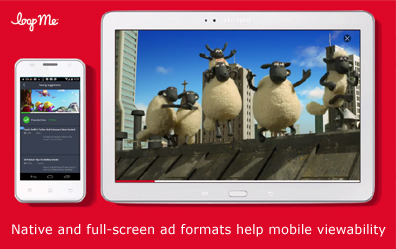Before the age of digital communications, we talked about ‘above the fold’. This was where the most important news and ads were displayed, so that they could still be seen when newspapers were folded.
The more things change, the more they stay the same. Today, we still talk about ‘above the fold’, but now it refers to the portion of an online page that is visible on the screen – and, within that space, the ads that are also visible.
But newspapers are fairly similar in size and shape. We know where ‘the fold’ is. With digital, we have devices of many different formats, particularly with mobile, from the smallest phones, through phablets, to tablets. If it’s uncertain where the fold lies, how can it be determined that ads are above it, or below it, out of sight?
This issue, known as ‘viewability’, is important. Advertisers appearing below the fold may not be viewable, and yet impressions served may still be charged. This could happen if a long page is loaded, with an ad slot at the bottom that, while part of the page, isn’t viewable on the screen. The ad is served, but not seen.
The good news is that, despite this fluidity of form, mobile offers strong viewability, especially in apps, and especially with formats such as full-screen and native.
The official definition of viewability is succinct. According to the Media Rating Council (MRC), it’s simply that 50% of an ad’s pixels must be in view on the screen for a minimum of one second. This is how much and how long it considers necessary for a user to have seen an ad and, having seen it, to take action, and it’s the definition Google recently used in its research into viewability.
However, the Google research did not include mobile. This is unfortunate because mobile generally, and in-app in particular, offer a much more reliable viewable experience.
Apps are designed specifically to work with mobile devices, so there’s much more control over what appears where. It behoves app developers who want to monetise through advertising, to make sure the ads are viewable. This means we’re almost back to the newspaper days, because with apps, we know where the fold is.
This is not just my opinion either. In the PDF version of its Viewable Ad Impression Measurement Guidelines, the MRC states that it regards ad impressions served in an in-app environment as viewable. And, given that 89% of time spent on mobile devices is in-app rather than via mobile web, this makes mobile ads significantly more viewable, more of the time.
However, let’s assume that some mobile app developers somewhere don’t make sure their ad slots are viewable, for example by incorrectly designing the responsive interface for certain screen sizes or orientations. What then?
 This is where full-screen ads come into play. They’re viewable by definition because they take up the entire screen. These formats work particularly well in certain situation such as gaming apps, where they can slot neatly into the user journey, for example between levels of games.
This is where full-screen ads come into play. They’re viewable by definition because they take up the entire screen. These formats work particularly well in certain situation such as gaming apps, where they can slot neatly into the user journey, for example between levels of games.
Finally, there’s native mobile advertising. This is where the ad format is designed specifically to marry into the user interface and, as such, is about as viewable as you can get.
In this instance, every effort has been taken to make the ad viewable without being intrusive. Fixed native ads are designed into the interface, while scrolling native ads, such as the Facebook autoplay videos, only start playing when they’re at least 50% viewable, thus adhering to the MRC definition. And when native mobile advertising is, in turn, married to compelling formats such as video mobile advertising, the results can be explosive, with huge uplifts in engagement metrics and audience sizes to rival TV.
There are other issues emerging around mobile’s suitability for viewability too. For example, open ad management platform Sizmek just released data revealing that HTML5 is a great performer for mobile viewability. So it’s not even just about apps or formats. Even the means of delivery is better suited for viewability on mobile.
We’ve come a long way from the early days of mobile advertising, where banner ads were ported from large screen to tiny feature devices. Today, new formats, displayed on new, more capable devices with larger screens, with more effective means of delivery, are giving advertisers more confidence that their budgets are paying for ads that audiences actually see. Sometimes, the more things change, the more they actually… change.





